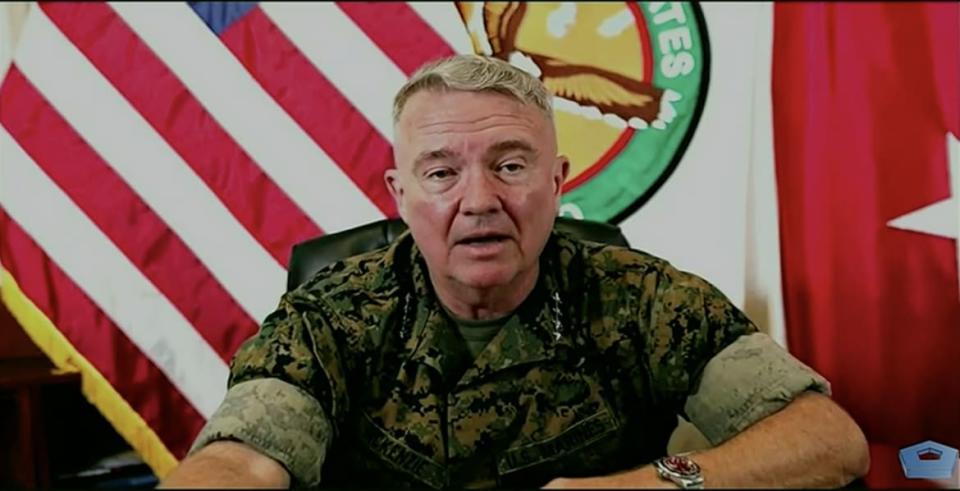General Admits Kabul Drone Strike Was ‘Terrible Mistake’ That Killed 10 Innocents

A U.S. drone strike in Kabul on Aug. 29 that military planners thought was targeting an ISIS-K terrorist in fact “killed as many as 10 civilians, including up to seven children,” a top American general said at a Pentagon news conference on Friday.
“Our investigation now concludes that the strike was a tragic mistake,” General Frank McKenzie, the head of U.S. Central Command, told reporters.

Gen. Frank McKenzie briefs reporters on Friday.
At the time of the strike, McKenzie said he was confident, based upon the intelligence he had received, that it “had averted an imminent threat to our forces at the airport. Based upon that assessment, I and other leaders in the department repeatedly asserted the validity of this strike.”
But, he continued, “I’m here today to set the record straight and acknowledge our mistakes.”

A map shared by McKenzie highlighting the path taken by the vehicle being tracked by U.S. forces.
“Frankly, we thought this was a good lead,” said McKenzie. “We were wrong.”
However, he insisted, the strike “must be considered in the context of the situation on the ground.”
“We didn’t take the strike because we thought we were wrong, we took the strike because we thought we had a good target.”
McKenzie, who offered his “profound condolences” to the victims and their families, said the military launched the strike “in the profound belief” that ISIS-K was readying an attack on the airport in Kabul, following the one three days earlier that killed more than 140 people, with 13 American service members among them.
The white Toyota Corolla sedan targeted by the drone was believed to be loaded with explosives. However, it later emerged that the vehicle was actually carrying bottles of water. The driver, aid worker Zemari Ahmadi, was not affiliated with ISIS or any other terror organization. He appeared on the military’s radar when he stopped briefly at an alleged ISIS safe house near the airport, after which a Reaper drone began shadowing him.
During the 36 hours preceding the drone strike, the military received more than 60 pieces of intelligence suggesting imminent threats via “multiple avenues of attack,” said McKenzie.
“One of the most recurring aspects of the intelligence was that ISIS-K would utilize a white Toyota Corolla, as a key element in the next attack,” he explained, subsequently conceding, “Clearly, our intelligence was wrong on this particular white Toyota Corolla.”
Still, McKenzie maintained, “This was a self-defense strike taken under self-defense rules of engagement, based on an imminent threat to attack us.”
None of the intelligence the U.S. received or acted on came from the Taliban, McKenzie said.
The U.S. is now “exploring the possibility” of ex gratia payments, or monetary reparations, to relatives of the victims, according to McKenzie.
The final report of the investigation is “highly classified,” said McKenzie, who wouldn’t comment on whether or not it will be released publicly.
The Pentagon’s investigation comes on the heels of a New York Times analysis of video evidence that cast doubt on Joint Chiefs Chairman Gen. Mark A. Milley’s original assessment that the strike was a “righteous” one.
Got a tip? Send it to The Daily Beast here
Get our top stories in your inbox every day. Sign up now!
Daily Beast Membership: Beast Inside goes deeper on the stories that matter to you. Learn more.

 Yahoo Movies
Yahoo Movies 